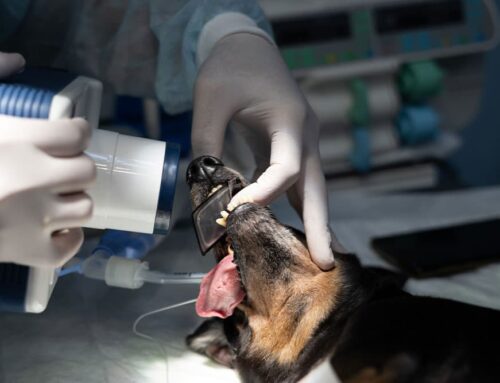As a responsible pet owner, you should have your pet spayed or neutered, because these procedures are important for their good health and general wellbeing. However, knowing when to spay or neuter your pet can be confusing. Our South Shores Pet Clinic team wants to help by providing information about these procedures, and guidelines for when your pet should be spayed or neutered.
Spaying or neutering your pet is important
About 6.5 million pets enter U.S. animal shelters every year, and approximately 1.5 million are euthanized. Spaying or neutering your pet helps control the pet population and lessen these upsetting situations. These procedures also provide many health benefits and can prevent certain behavioral issues. Benefits for you and your pet include:
- Prevents uterine infections — Hormonal changes in the female’s reproductive tract during her heat cycle can result in uterine infections that can be life-threatening. Spaying your female pet prevents this condition.
- Decreases mammary tumor risk — Mammary tumors are cancerous in about 50% of dogs and 90% of cats. Spaying your female pet before her first heat cycle significantly decreases her mammary tumor risk.
- Prevents testicular cancer — Neutering your male pet ensures they won’t suffer from testicular cancer.
- Decreases prostate problems — Neutering your male pet decreases their risk for prostate problems.
- Prevents heat cycles — A female pet in heat tends to vocalize loudly and urinate more frequently to advertise for male companionship. In addition, female dogs typically have a messy, bloody discharge. Spaying your female pet prevents heat cycles.
- Decreases roaming — Unneutered males are driven to roam to find a female, which puts them at risk for traffic accidents and fighting with other animals. Neutering your male pet helps decrease their roaming tendency.
- Decreases unwanted behavior — Unneutered male pets are more likely to spray urine to mark their territory in your home, and to exhibit mounting behavior. Neutering them will help decrease these behaviors, and may help prevent aggression issues.
What to expect when your pet is spayed or neutered
Spays and neuters are the most common surgical procedures that veterinarians perform, and your pet’s safety is always the primary concern. Generally, these procedures include:
- Fasting — Most pets should be fasted after midnight the night before their surgery to protect them from complications during anesthesia.
- Blood work — We perform a complete blood count and a biochemistry profile on all pets undergoing general anesthesia to assess their overall health.
- Anesthesia — Your pet is placed under anesthesia, and a veterinary professional closely monitors their vitals throughout the surgery to ensure their anesthetic plane is appropriate.
- Spay procedure — A spay involves an abdominal incision and removing the ovaries and uterus and takes 20 to 90 minutes, depending on the pet’s age and the timing of their heat cycle.
- Neuter procedure — A dog neuter involves an incision at the base of the penis and removing the testicles and takes 10 to 20 minutes, depending on the dog’s age. A cat neuter involves an incision in the scrotum and removing the testicles, which takes about only five minutes.
- Recovery — Your pet recovers in a quiet area, where they are monitored until they are fully awake.
- Discharge instructions — We send your pet home with detailed discharge instructions, including how to care for the incision site and exercise restriction requirements.
When to spay or neuter your pet

Spaying and neutering pets is a routine practice that typically has occurred between 4 and 6 months of age, but University of California, Davis, research has demonstrated that this may not be the best time to spay or neuter your dog. Sex hormones are important for psychological development as well as the musculoskeletal, cardiovascular, and immune systems. Studies show that early neutering or spaying in large- and giant-breed dogs may be associated with increased risk of certain health conditions, such as hip and elbow dysplasia, cranial cruciate ligament disease, lymphoma, mast cell tumor, hemangiosarcoma, and osteosarcoma. General guidelines for spaying or neutering your pet include:
- Male and female cats — Cats should be spayed and neutered at approximately 5 months of age.
- Male and female small-breed dogs — Dogs whose projected adult body weight is under 45 pounds should be neutered at 6 months of age or spayed prior to their first heat cycle, which typically occurs at 5 to 6 months.
- Male large-breed dogs — Male dogs whose projected adult body weight is more than 45 pounds should be neutered after they stop growing, which is usually between 9 and 15 months of age, depending on their breed.
- Female large-breed dogs — Female dogs whose projected adult body weight is more than 45 pounds should be spayed between 5 and 15 months, depending on their breed, disease risk, and lifestyle.
Other considerations include that spaying and neutering procedures are more difficult to perform in older pets, and spaying a female dog in heat may exacerbate excessive bleeding. Our veterinary professionals will help you determine the best time to spay or neuter your pet.
Spaying or neutering your pet is important to improve your pet’s overall health and wellbeing, and helps decrease the pet population. If you would like to schedule a spay or neuter for your pet, contact our South Shores Pet Clinic team, so we can determine the best time to perform your pet’s procedure.







Leave A Comment